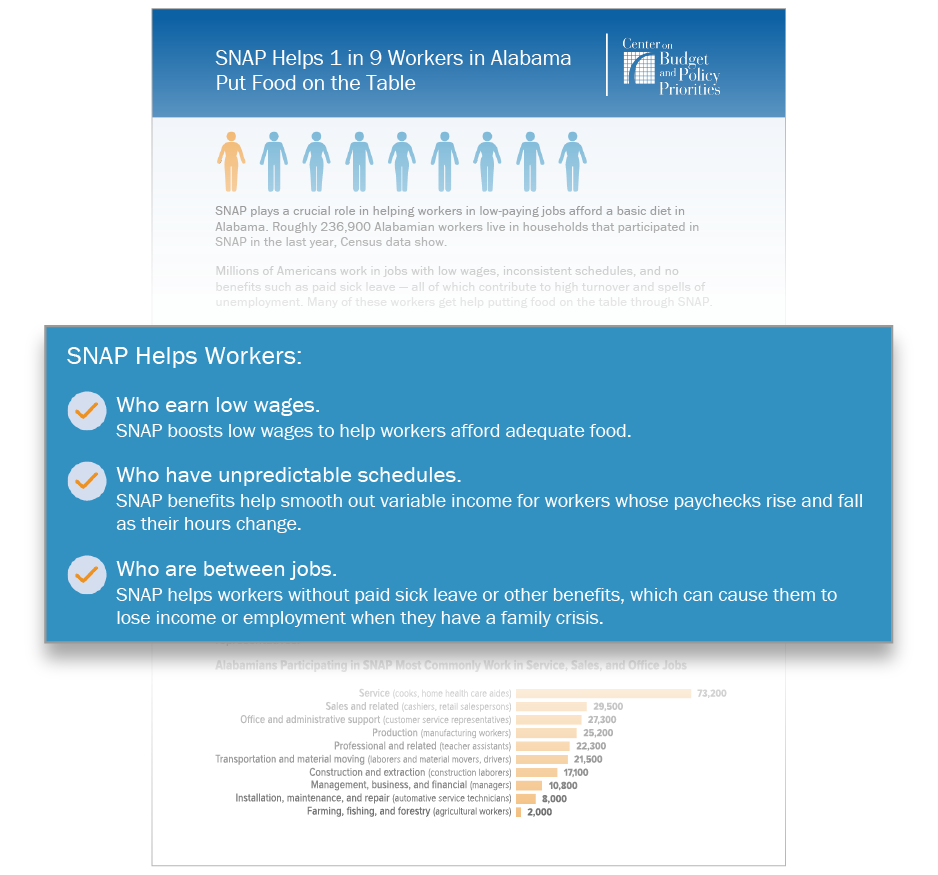off the charts
POLICY INSIGHT
BEYOND THE NUMBERS
BEYOND THE NUMBERS
SNAP Supports Workers in Every State
Receive the latest news and reports from the Center
This Labor Day, millions of workers across the country are better able to feed their families thanks to the support of SNAP (formerly food stamps). SNAP’s structure supports work by supplementing earnings and phasing out slowly as earnings rise, which allows it to help workers who often are in jobs with low pay and inconsistent hours, and without key benefits, as we describe in a paper and show in an animated video. Our new state fact sheets show the types of jobs that are most common among workers who participate in SNAP.

In every state, service occupations, such as cooks and home health aides, are among the most common among workers who participate in SNAP, often because workers in these jobs may not earn wages high enough, or have enough hours available, to put enough food on the table.
These fact sheets also show the jobs in which SNAP participation is most common. In nearly every state with available data, over one-fifth of personal care aides participate in SNAP, and in many states, more than one in ten workers in jobs such as housekeepers, dishwashers, and hand packagers participate in SNAP. (These data and more are also available in our interactive map.)
From agricultural workers in California and personal care workers in Oregon to truck drivers in Georgia and janitors in Washington, D.C., SNAP helps hard-working Americans buy groceries.